
Antoine Predock, a renowned architect, writer, and professor, passed away on March 2, 2024, at the age of 87, in Albuquerque, New Mexico. He was known for his buildings that resonated with the landscapes, and he was influenced by a connection to the body and earthen materials in his designs. He has various internationally well-known projects, such as the Canadian Museum for Human Rights, the Tang Teaching Museum and Art Gallery at Skidmore College, Flint RiverQuarium, and the Nelson Fine Arts Center. He also was a long-term faculty member at the University of New Mexico.
Predock was born in Lebanon, Missouri, in 1936. He first started to study engineering at the University of Missouri, then the University of New Mexico, where he called the state his “spiritual home.” After taking a technical drawing course taught by modernist architect Donald Schlegen, Predock reevaluated his career choices and turned his goals to architecture. He obtained his bachelor’s degree in architecture from Columbia University.
In 1967, Predock founded his first office in Albuquerque, New Mexico. He and his firm planned, developed, and collaborated on more than 100 buildings and projects. Their work was featured in over 60 exhibitions, 250 books, and over 1,000 publications. Predock also held teaching positions in at least 14 universities in the United States and abroad.
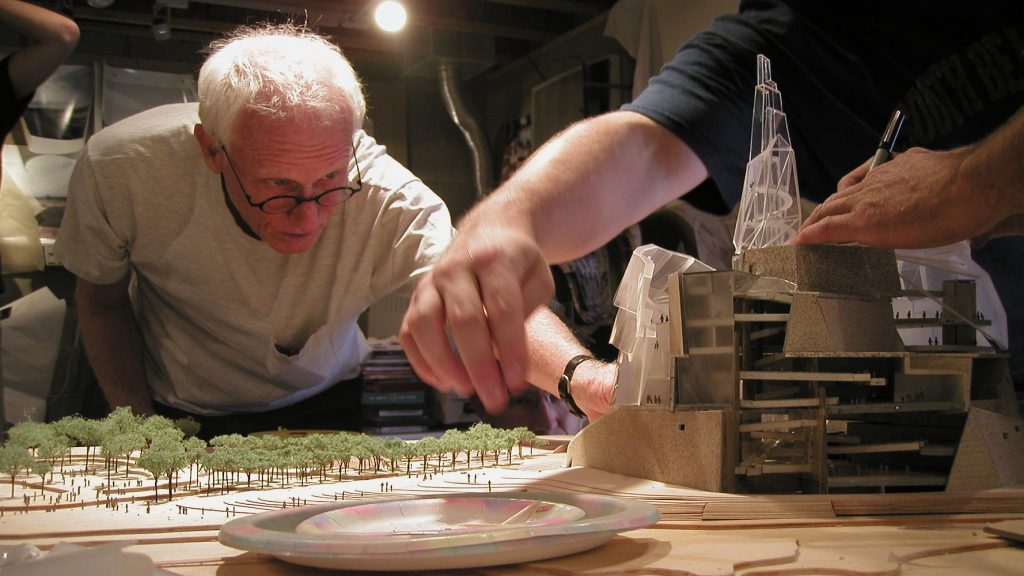
Predock’s works always had an intersection of architecture and landscape; he was mostly inspired by nature and geology. Christoper Mead wrote, “Inspiration, legend, and irony ran together in a postmodern hypertext of publicity that soon made Predock into a superstar, cast variously in the mythic roles of desert shaman or Western outlaw, who rode into town on his Vincent Black Shadow motorcycle to challenge the architectural establishment.” about him in his eulogy. Motorcycles were another passion of Predock; he once said, “When I ride, my experience becomes seamless. My buildings are like those rides; they reveal both topical and timeless.”
“Underwater, I experience space with my body. I’ll see a school of fish gathering and moving together and I’ll exclaim, ‘This is architecture.'”
Antoine Predock
Antoine Predock is renowned for his skill in creating a blend of relations between natural surroundings and human experiences in his architectural designs. Here are four notable projects, among many, to get to know his works:
Canadian Museum for Human Rights, Winnipeg, Canada, (2008)
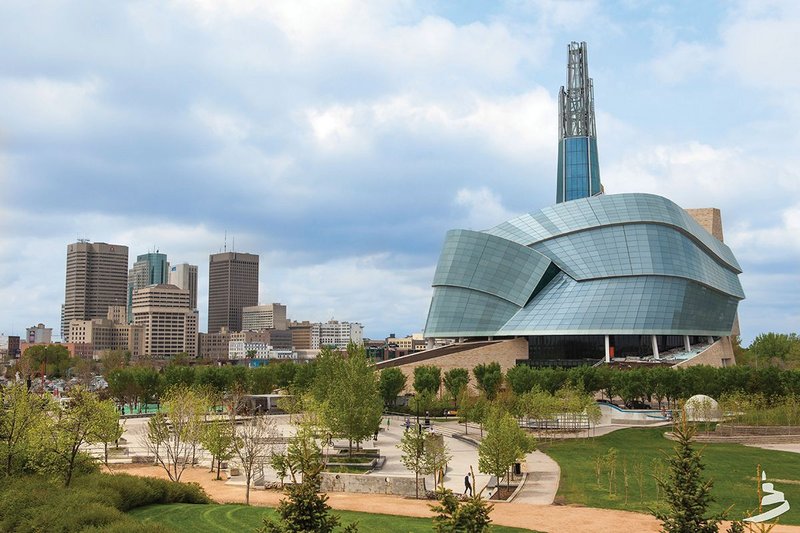
Canadian Museum for Human Rights is one of Antoine Predock’s most iconic works. He describes this building as, “Carved into the earth and dissolving into the Winnipeg horizon, the abstract, ephemeral wings of a white dove embrace a mythic stone mountain of 450 million-year-old Tyndall limestone. The structure is a timeless landmark for all nations and cultures—a symbolic apparition of ice, clouds, and stone set in a field of sweet grass.”
The design of the building highlights the earth’s importance in many locations, such as the visitor’s entrance between protective stone arms or roots and the Great Hall at the heart of the building, which is carved from the earth to evoke the memory of ancient gatherings. The project includes office areas, classrooms, museum st?re, cafe concessions, and exhibition spaces.
Nelson Fine Arts Center, Tempe, Arizona (1990)
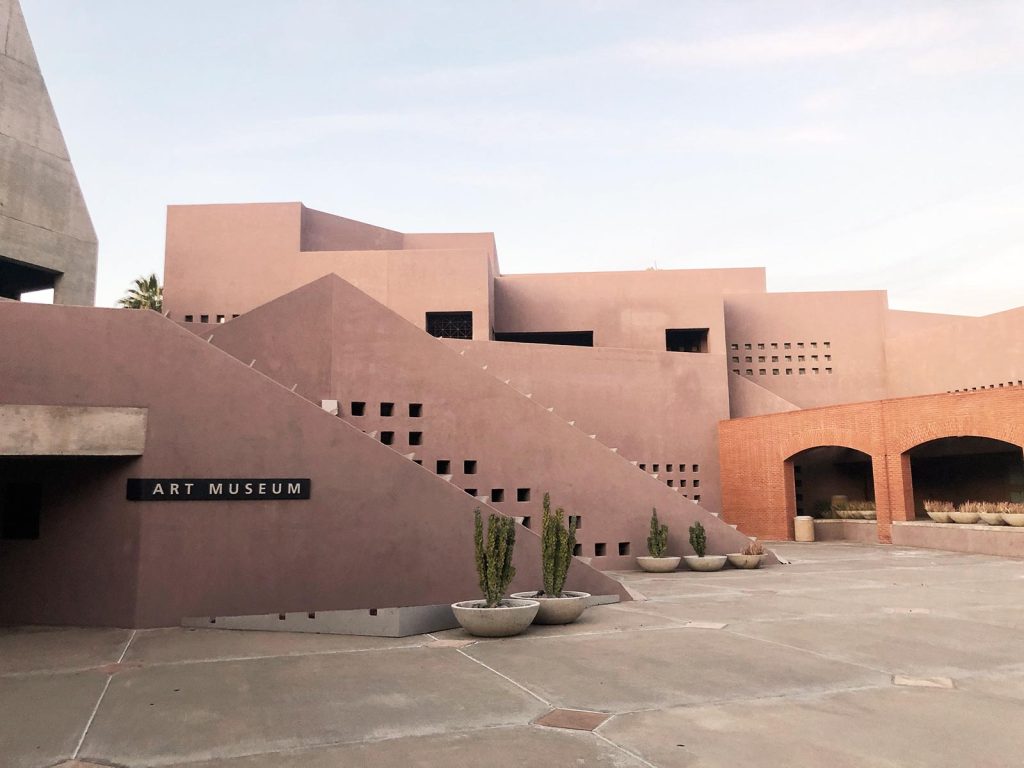
Antoine Predock completed the Nelson Fine Arts Center on the Arizona State University’s Tempe campus in 1990. The building, featuring a museum, theater arts, and dance department, offers an experience, a journey, options, and potentials rather than particular paths. It has an open design that allows for engagements both vertically and horizontally. The building, also known as the “magic mountain” or the “oasis,” learns from vernacular desert architecture to respond to the site’s environment and climate.
The journey, presented with dynamic design, extends to the sky, with unexpected terraces and balconies toward towers that define the west campus entry. There are both upward and downward paths from the middle ground where the theaters and theater arts spaces are located. Each visitor’s experience creates possibilities that become trails.
Flint RiverQuarium, Albany, Georgia (2004)
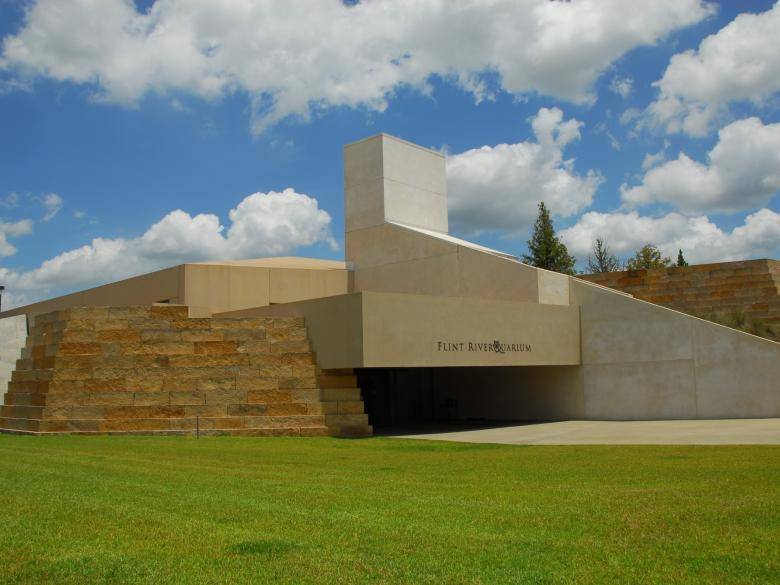
The Riverquarium is a complex and collaborative integration of architecture and exhibit design inspired by the biology, geology, and hydrology of southwest Georgia. The landmark building connects the city of Albany to the Flint River and revitalizes the downtown district by offering points for discovery journeys. Predock’s design for the building reveals a topologically evolving transition between nature and architecture.
With the massive and dynamic forms of the museum, the RiverQuarium resembles a mountain with limestone blocks as the main material. After entering this stone mountain, visitors reach the different galleries, such as Discovery Caverns, The World of Water, Spring Run Creek, and The Flint River Gallery, as well as a store, information center, and lab classrooms.
Luxe Lakes Arts Center, Chengdu, China (2014)
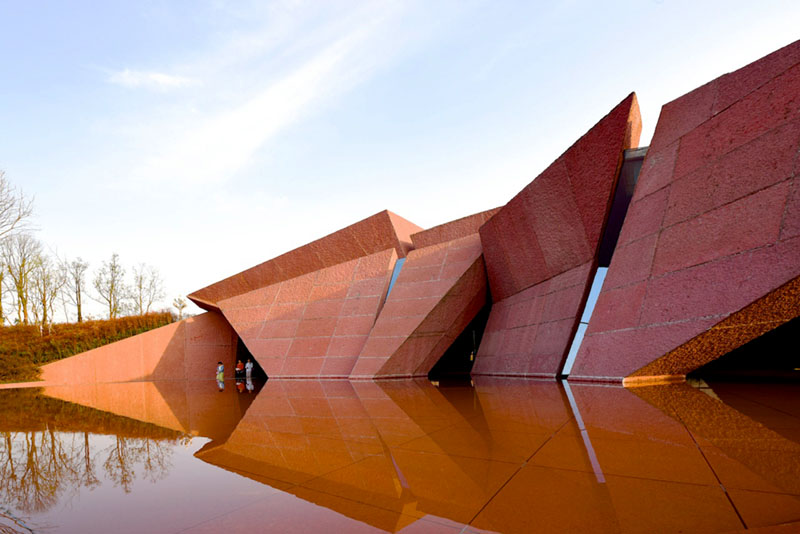
The Luxe Lake Gateway and Art Center is an entry building to the town of 100,00 people on the outskirts of Chengdu, the Luxe Lake development. The center serves as a community center for the city. Visitors can enjoy art, theatre, and dining.
The building’s design was inspired by Chinese culture, Scihuan’s landscape, the site’s agricultural history, and the city’s demands. While the iconic red sandstone walls capture the initial attention, the building also includes different functions that offer people a place to spend quality time. It includes galleries, restaurants, meeting rooms, office areas, halls, and nature that extend from the lake, embracing the topography of the hillside.




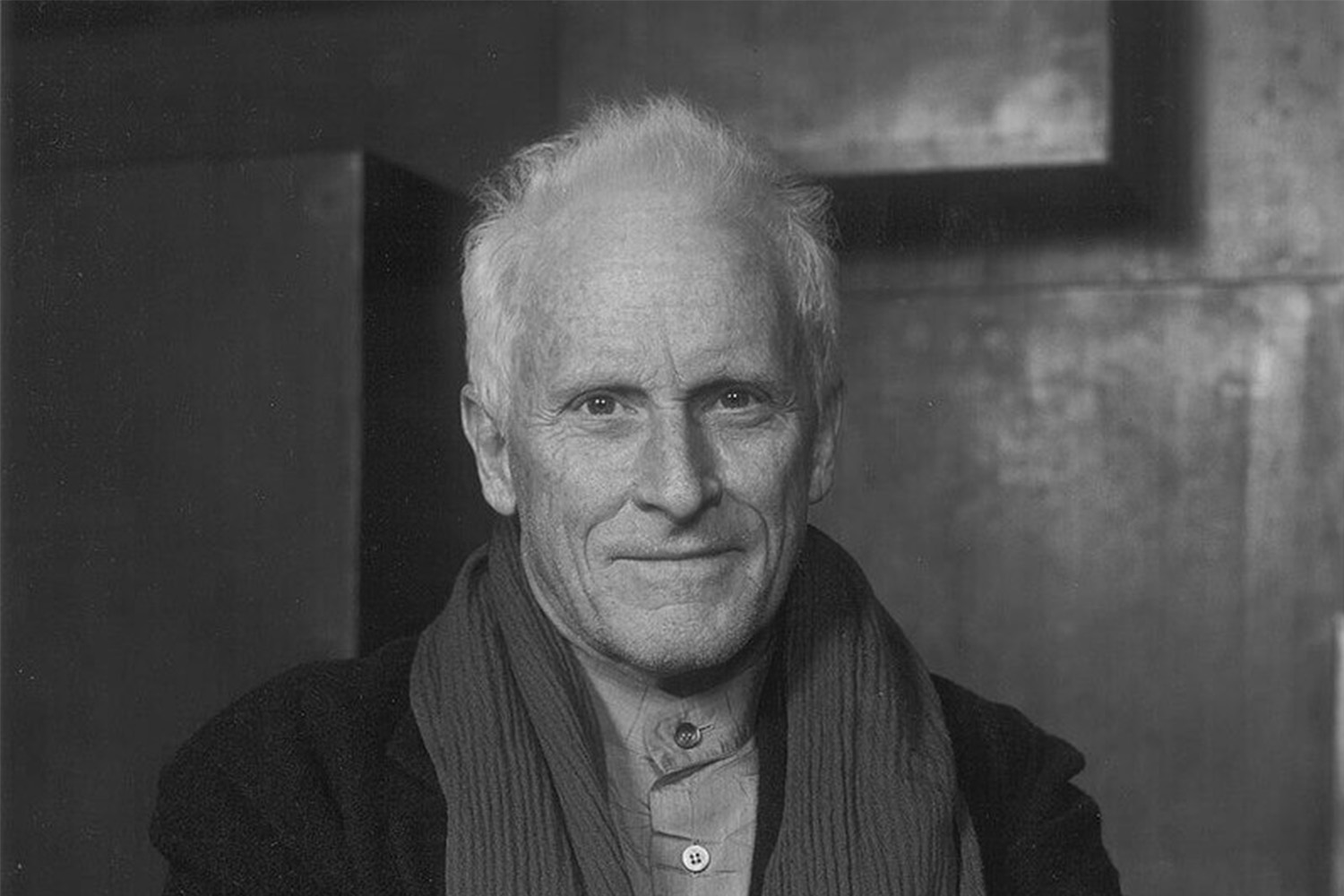
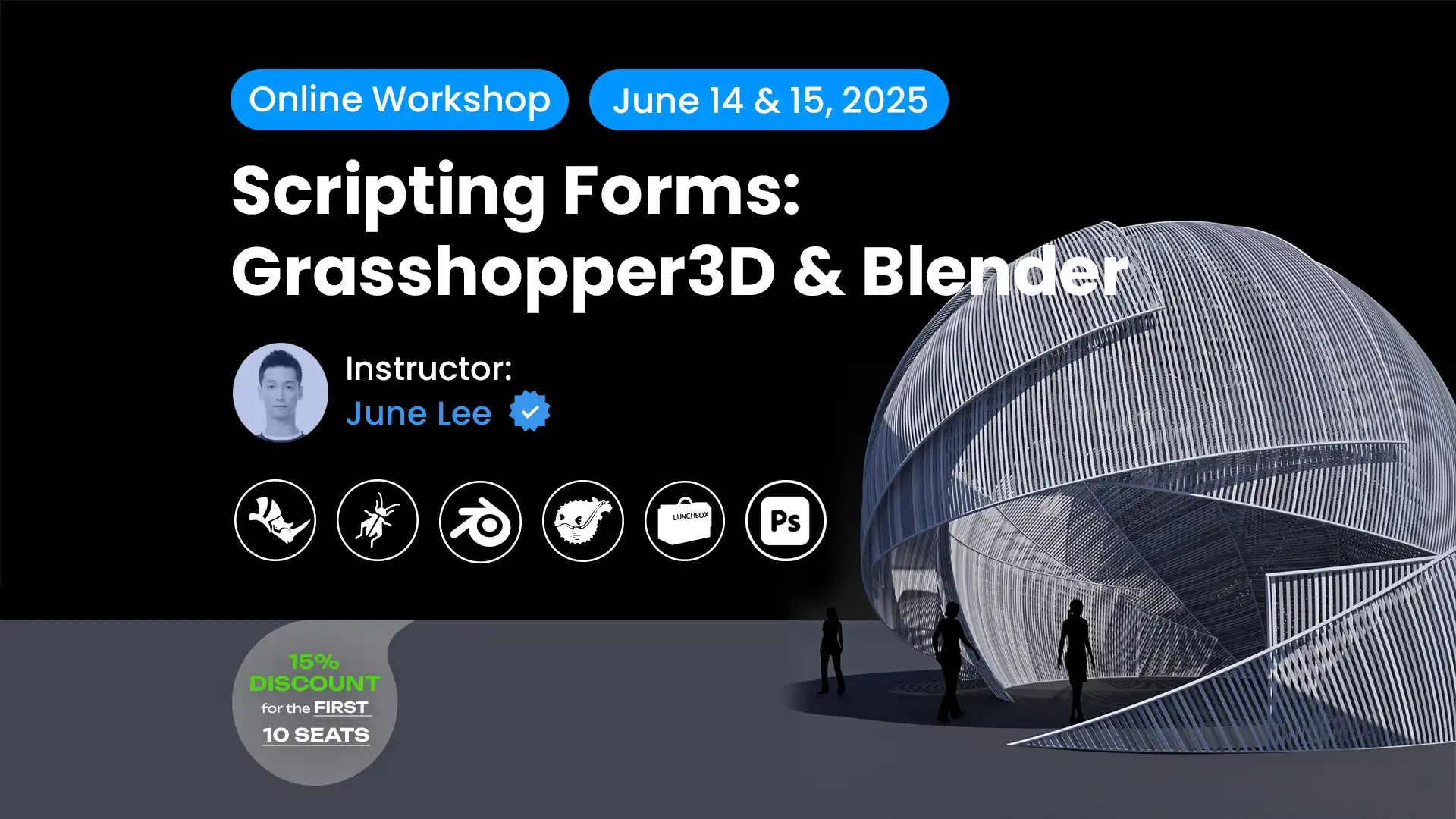


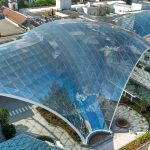









Leave a comment